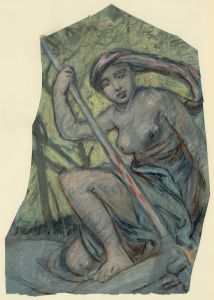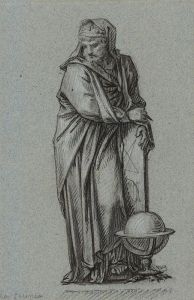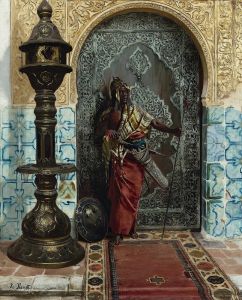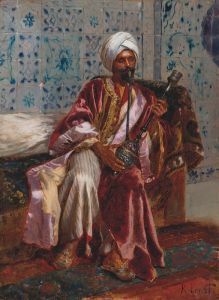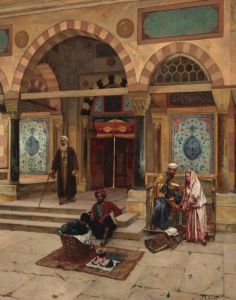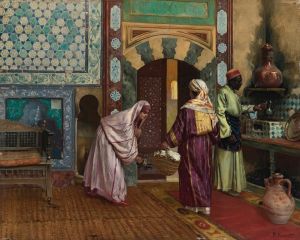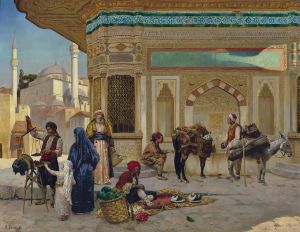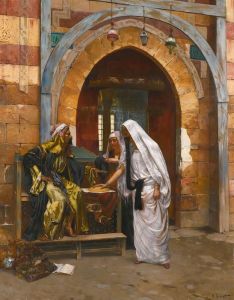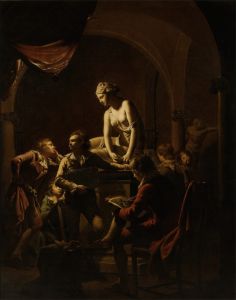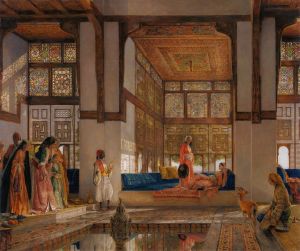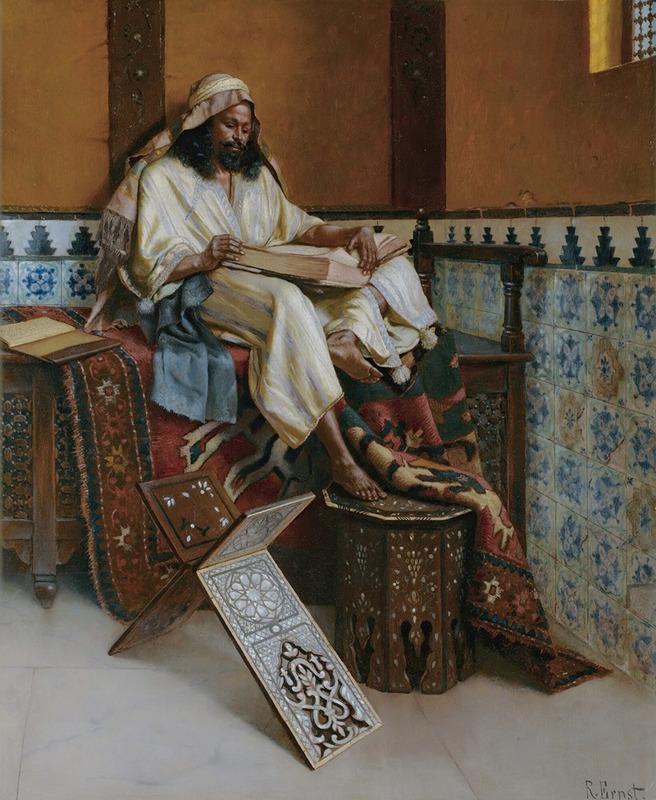
The Scholar
A hand-painted replica of Rudolf Ernst’s masterpiece The Scholar, meticulously crafted by professional artists to capture the true essence of the original. Each piece is created with museum-quality canvas and rare mineral pigments, carefully painted by experienced artists with delicate brushstrokes and rich, layered colors to perfectly recreate the texture of the original artwork. Unlike machine-printed reproductions, this hand-painted version brings the painting to life, infused with the artist’s emotions and skill in every stroke. Whether for personal collection or home decoration, it instantly elevates the artistic atmosphere of any space.
Rudolf Ernst was an Austrian painter known for his Orientalist works, capturing scenes inspired by the Middle East and North Africa. One of his notable paintings is "The Scholar," which exemplifies his fascination with the exotic and his meticulous attention to detail.
"The Scholar" portrays a serene and contemplative scene, featuring a scholar engrossed in his studies. The painting is a testament to Ernst's skill in rendering intricate details and textures, which is evident in the depiction of the scholar's surroundings. The setting is richly decorated, with ornate patterns and vibrant colors that are characteristic of Ernst's Orientalist style. The scholar is depicted wearing traditional attire, which adds to the authenticity and cultural richness of the scene.
Ernst's work is often celebrated for its ability to transport viewers to distant lands, and "The Scholar" is no exception. The painting captures the essence of a scholarly environment, with books and manuscripts scattered around, suggesting a deep engagement with knowledge and learning. This focus on intellectual pursuit is a recurring theme in Orientalist art, reflecting Western artists' fascination with the perceived wisdom and mystique of Eastern cultures.
The artist's attention to detail is particularly evident in the textures of the fabrics and the intricate designs of the architectural elements within the painting. Ernst's use of light and shadow adds depth and dimension, creating a realistic and immersive atmosphere. The careful composition and harmonious color palette further enhance the painting's aesthetic appeal.
Rudolf Ernst was part of a broader movement of Orientalism in 19th-century European art, where artists sought to depict the cultures and landscapes of the East. This movement was characterized by a romanticized and often idealized portrayal of Eastern subjects, which was influenced by the Western imagination and colonial interests of the time. While Orientalist art has been critiqued for its stereotypical and sometimes inaccurate representations, it remains a significant part of art history, offering insights into the cultural exchanges and perceptions of the era.
"The Scholar" is a reflection of Ernst's ability to blend artistic skill with cultural storytelling. His works, including this painting, are housed in various private collections and museums, appreciated for their beauty and historical significance. Ernst's legacy as an Orientalist painter continues to be studied and admired, contributing to the understanding of 19th-century European art and its engagement with the wider world.
In summary, "The Scholar" by Rudolf Ernst is a captivating example of Orientalist art, showcasing the artist's talent for detail and his interest in the intellectual and cultural aspects of Eastern societies. Through this painting, Ernst invites viewers to explore a world of knowledge and beauty, rendered with precision and artistic flair.






